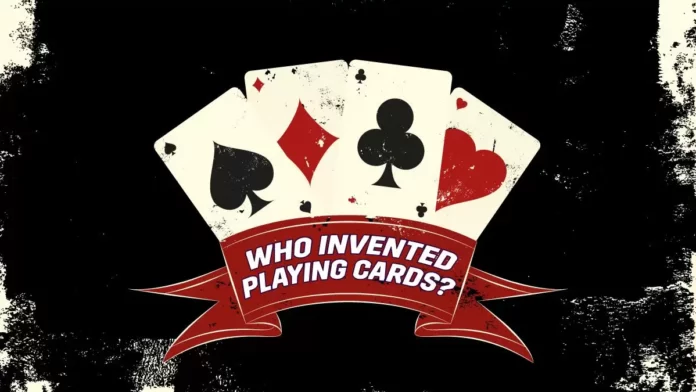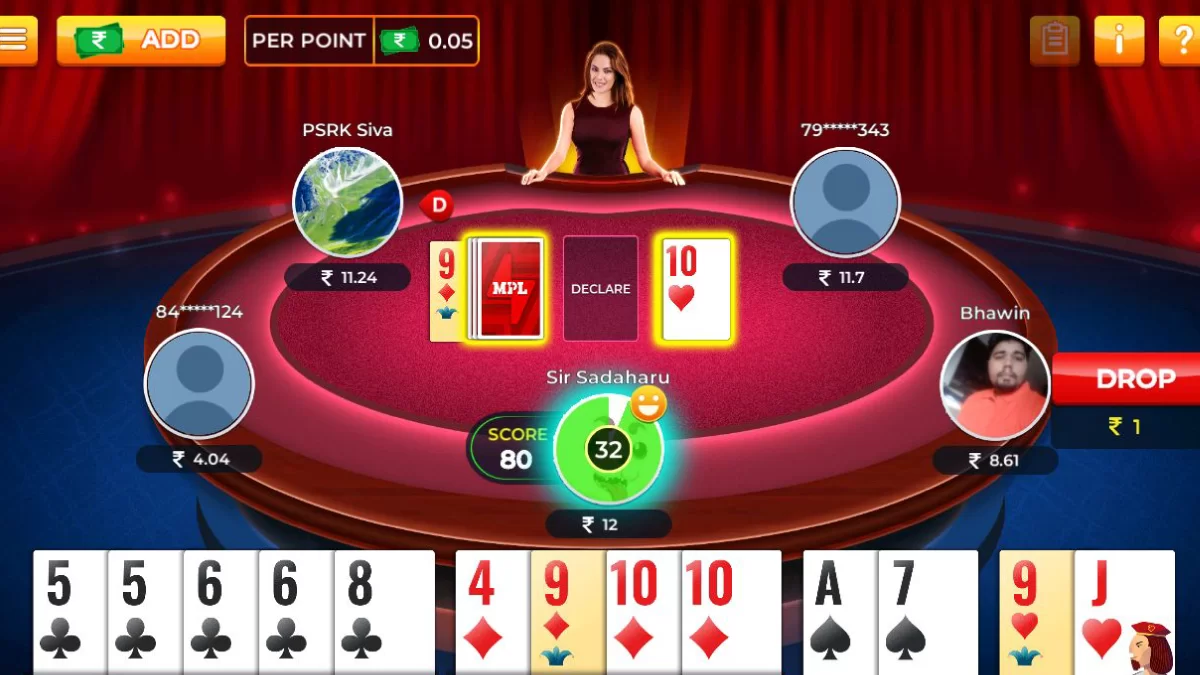Playing cards are the most essential part of any card game. When we play poker, rummy, or other card games, with a standard deck of cards containing cards of different suits, the origin of cards never strikes our minds. Do you know who invented playing cards, how did the suits come into the picture, how the cards were designed, and the complete history of playing cards?
All those intrigued by the rich history of card games and the origin of playing cards can find answers to their questions right here. Let’s take a look at what are playing cards and go through the history of playing cards
What are Playing Cards?
A playing card is a piece of card stock, thin cardboard, heavy paper, cotton-paper blend, plastic-coated paper or thin plastic, used for playing card games, cardistry, or magic tricks. A playing card’s front and back design usually has a smooth finish for easy handling. Playing cards are generally palm-sized and are sold in a set called a pack or a deck of cards.
Playing cards can be traditional, regional, or modern. French-suited cards are among the most common types of playing cards that come in a standard deck of 52 cards with an English pattern or Belgian-Genoese pattern. They are also available in varieties depending on their usage, such as in casinos, as promotional items, souvenirs, educational tools, artistic works, branded accessories, or for use by magicians.
With a wide variety of playing cards that exist in today’s world, isn’t it more fascinating to know the story of how all these cards that we take for granted were shaped by different cultures and countries?
History of Playing Cards
Earliest Playing Cards
While the origin of playing cards is highly-debated, it is believed that playing cards were invented in the 9th century in ancient China during the Tang Dynasty. The earliest reference to playing cards was in a 9th-century text called the Collection of Miscellanea at Duyang, when a Chinese writer, Su E, described Princess Tong Cheng playing the leaf game. Card games involving alcohol also emerged during the Tang Dynasty, but the cards didn’t contain any numbers or suits and has only printed instructions.
One of the earliest card games where the rules were known was a trick-taking game called Madiao from the Ming Dynasty. This game was played with money cards that were divided into four suits on coins, a string of coins, myriads, and tens of myriads.
Also Read: Top 6 Trick-Taking Card Games Similar to Spades
Spread across Egypt
In the 11th century, playing cards began to spread across Asia and reached Egypt. The earliest cards (four fragments) in the world can be found in the Benaki Museum and Keir Collection. These playing cards were from the 12th and 13th centuries of the early Mamluk periods. The Mamluk court cards didn’t depict people but hand abstract designs or calligraphy with ranks on them.
Introduction in Europe
The earliest record of playing cards being introduced in Europe is in the 1300s, arising from a ban on card games in Bern, Switzerland, in 1367. As the merchants from Islamic Mamluk Dynasty in Egypt began exports, playing cards first appeared in Italy or Spain in the 1370s. A German monk, Johannes, mentioned in his manuscript dated 1377 the appearance of playing cards and card games in Europe. The early patterns of Italian and Spanish cards were derived from the Mamluk period and came in suits of coins, swords, cups, and polo sticks which can still be found in traditional Latin decks. Since polo wasn’t a sport in Europe, polo sticks were replaced with batons or cudgels. The popularity of playing cards kept growing throughout the 14th and 15th centuries with the introduction of four suits in European cards: Swords, Cups, Clubs, and Coins. These Latin Suits are can still be seen in Italian playing cards.
These cards, notably the Court Cards, were hand-painted masterpieces to be luxury goods for the affluent class. While the Italian playing cards included a King, Queen, and Prince (later called Jack), the Spanish playing cards didn’t include any Queens, 10s, 8s, or 9s for the national game called Ombre. Therefore, most Spanish decks had only 40 cards.
Card Design
The King, Queen, Knight, and Knave became common in a European pack of 56 cards by the 15th century. The French playing cards placed Ace as the highest card above the King after the French revolution.
In 1693, the card packs with Latin suits and corner and edge indices were designed for players to hold the cards together, spread out in a fan, with one hand. In 1864, the first French deck was printed by Samuel Hart, which featured the same innovation. The later innovation in card design that followed was the reversible court cards; however, the French government prohibited this design from printing.
Gradually, sharp corners were replaced with round corners to avoid revealing the cards’ value and wearing out. The British, American and French players preferred cards with blank backs before the mid-19th century. However, the wear and tear of cards and writing on the blank backs led to card backs being designed with pictures, advertising, etc.
Also Read: Top card games of 2022 to include in your must-play list
Modern Playing Cards Deck Format
The modern playing cards are mainly grouped in three categories based on the suits in each deck – Latin, Germanic, and French. The suits in Spanish and Italian playing cards are closely related to the Latin suits. The French deck of 52-cards preserved the original Mamluk deck, excluding the new additions of jokers and tarot trump cards. The German suits are quite unique from the other suits. The main difference between Germanic and Latic decks is that the former decks drop the lower-valued pip cards while the latter drops the higher-valued cards.
Usually, there are indices printed on the upper-left and lower-right corners of most playing cards.
French-Suited Decks
It was in the 15th century that the French introduced the suit imagery in the history of playing cards. Moreover, they were the first to divide suits into red and black colours. Gradually, the French decks surpassed the German decks as the playing cards powerhouse in the world.
Today, the universally recognized deck that most card games such as Poker, Rummy, Solitaire, Call Break, etc., use is the French-suited deck, specifically the 52-card deck that includes 13 ranks of each suit with reversible face cards or court cards. The 52-cards commercial packs also include about one to six jokers.
The card company that develops the world’s most recognized and widely used playing cards, Bicycle Playing Cards, is USPCC. These cards are considered the industry leaders for playing cards.
Suits
The suits include Spades, Clubs, Hearts, and Diamonds. The Spades represent the word Sword (Old Spanish Spado), and Club is a translation of basto, which implies that the English used Spanish suits before French suits were introduced.
Ranks
The numbers 2 to 10 indicate the ranks on spot cards. Additionally, there are three court cards – Jack (J), Queen (Q), and King (K), which are notionally equal to the numbers 11, 12, and 13. In most cards, the number 1 is the Ace card marked as A.
Most dice games and other card games, such as trick-taking games, place the Ace card at the highest rank, above the King. In games that are based on numerical value, such as Cribbage, Blackjack, or 11, the Ace card counts as 1. Whereas, in rummy games or other games based on melding or arranging cards, the Ace may count as the highest card, lowest card, or even both.
Jokers
A standard pack of 52-cards also contains two or more additional cards that are jokers. A traditional court jester depicts jokers. Jokers were invented to serve as the highest trump in games such as Euchre. Many games use these jokers in different ways. For instance, in rummy games such as canasta, jokers are used as wild cards.
Also Read: The History, Role, and Tips to Use Joker in Card Games
Conclusion
The history of playing cards is expansive and intriguing, one that you would be reminded of every time you hold a pack of cards in hand to play one of your favourite card games. The development of playing cards hasn’t stopped yet as the design of printed decks will continue to evolve and fascinate people.










